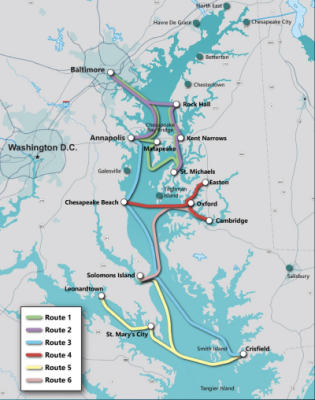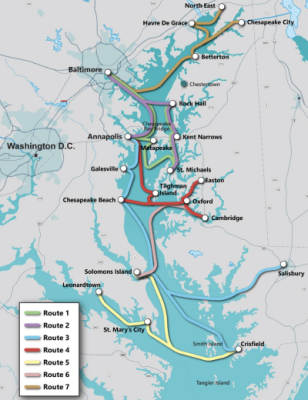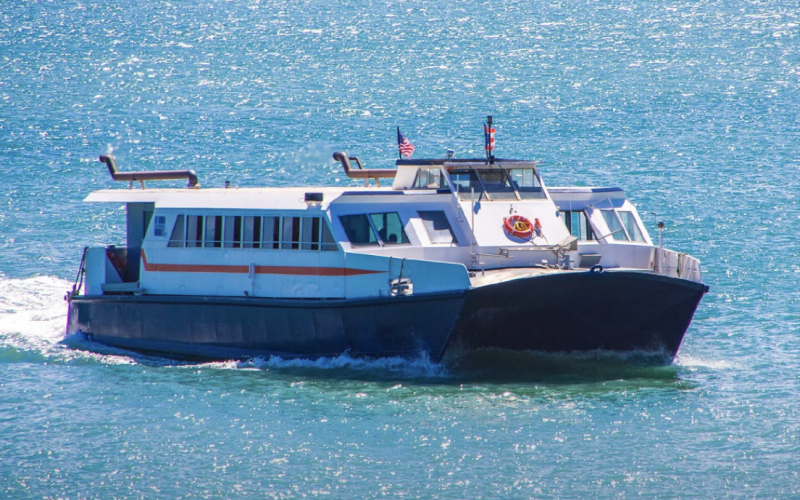A new Chesapeake Bay passenger ferry system could “restore vital water connectivity, promote tourism, and boost local economies by linking residents and visitors to bayside destinations,” according to backers of a new initiative by five Maryland counties.
The Chesapeake Bay Passenger Ferry Consortium released findings of a feasibility study for bay ferry service at the Maryland Association of Counties Conference in Ocean City, Md., on Aug. 15.
Anne Arundel, Calvert, Queen Anne’s, Somerset, and St. Mary’s counties commissioned the study by transportation consultants Cambridge Systematics, Inc., Medford, Mass.
“The study identified a promising opportunity to enhance transportation and economic growth across 21 coastal communities in Maryland,” according to a statement by the ferry consortium. “This initiative aims to restore vital water connectivity, promote tourism, and boost local economies by linking residents and visitors to bayside destinations.”
The study proposes a “Baseline Passenger Ferry System” that would initially focusing on 14 key communities, with potential to generate regional economic benefits, job creation and increased tourism revenue.

Cambridge Systematics, Inc., also found “significant support from community partners and stakeholders for a regional ferry system, with 67% of survey respondents expressing interest in the ferry service and 62% of community partners interested in engaging activities for visitors as well as residents.”
Amid those details there is consideration of what a system would need for vessels. The study envisions boats built to Coast Guard Subchapter T standards of 49- to 149-passenger capacity.
Requirements should include climate-controlled passenger space, 25 knot cruising speed and “maximum speed not to exceed 30 knots to avoid additional crewing requirements associated with high- speed vessels,” the report recommends.
The report also has pointed recommendations for passenger comforts.
“With almost all transit times exceeding 30 minutes, and some approaching two hours, it is important to prioritize a comfortable and enjoyable experience for customers. Ensuring that customers arrive at their destination alert and happy is vital to creating repeat customers and maximizing that tourist's economic impact.”
Catamaran designs will be a better bet for 25-knot cruising speeds. “Catamarans are generally more stable than monohulls as well as more fuel efficient in the desired speed range than a monohull vessel of similar size operating at the same speed,” the report notes.
“The Chesapeake Bay Passenger Ferry Feasibility Study and the Chesapeake Bay Passenger Ferry Consortium showcase the transformative potential of our region,” said Kristen Pironis, executive director of Visit Annapolis & Anne Arundel County.
“Five counties across the state joined forces to work on this effort. As we explore next steps, this opportunity can expand to include partners across the Bay. We are optimistic about the study results and the path forward, which could better connect our Chesapeake Bay destinations and create economic impact across the entire state.”






